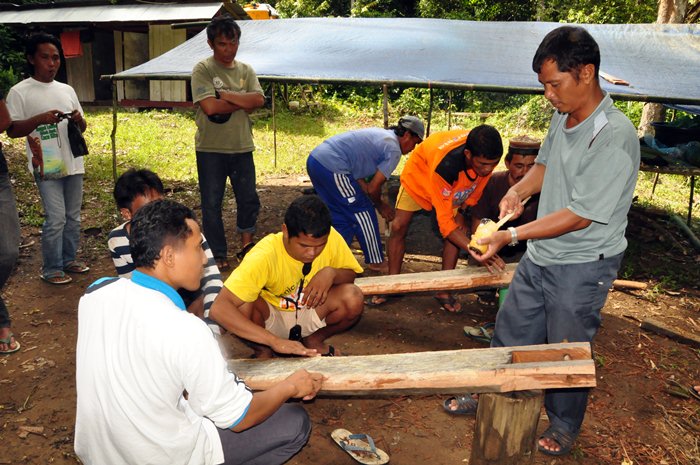
Berau regency is famous for its high quality and quantity of wild honey. However, due to increasing forest conversion for plantations and deforestation, concerns are increasing that the honey production will decrease or even disappear in the future. Therefore, on 26-28 November 2012, the Berau District Forest Service together with The Nature Conservancy (TNC), GIZ FORCLIME, the local NGO Nemdoh Nemdung and the community of Kelay Sub-district conducted a training on Sustainable Harvesting of Wild Honey. The event was attended by community representatives from 6 villages located close to West Berau Forest Management Unit, namely Duhung Long, Long Lanuk, Lesan Dayak, Merabu, Panaan and Merapun villages.
GIZ FORCLIME facilitated the training through providing resource persons from West Kalimantan: a trainer in forest honey harvesting from the Pontianak-based NGO KABAN and a wild honey farmer from the Periau Association of Lake Sentarum (APDS). During the training, participants were introduced to a new method for making artificial beehives called tikung which are popular in Lake Sentarum. A Tikung is an artificial honeycomb made of wood and placed on the tree, but not too high, so that harvesting the honey becomes easier than with the natural hives located high up in the trees. Materials for making the artificial hives are easy to get and they are not too difficult to make. In addition to making and installing tikung, participants also obtained knowledge and information on sustainable harvesting, packaging of harvested honey, and marketing wild honey.
With the technology transfer gained through the training in Kelay local communities will be able to make a real breakthrough with the utilisation of this Non-Timber-Forest-Product. For generations they have harvested the wild honey from a height of 40-70 meters with minimum safety devices, consequently, wild honey harvesting has been a very dangerous business for them. Encouraged by the training villagers were now keen to try the new technique hoping that the bees will accept the artificial hives.
After the training, participants developed follow-up plans, such as (1) Making 10-15 tikung to be installed at their respective villages, (2) Establishing honeybee farmer groups to facilitate coordination between villages, (3) Coordinating with the District Forestry Service for obtaining support for further development. The participants also agreed to meet again in February 2013 to evaluate their action plan.






